Sometimes it seems like we need an encyclopedia to explain what everything is when shopping for beauty products. Ampoule, tincture, pressed serum, efficacy, what? Different ingredients and slang terms can leave us scratching our heads but sometimes seemingly simple things can leave us perplexed. Take natural and nontoxic sunscreens.
Have you ever considered the different kinds of sunscreens? Or were you just concerned about finding a decent sunscreen with a high SPF and UVA/UVB protection that didn’t make you look like a ghost? With sunscreens, it’s essential to know what we’re getting because a lack of understanding can result in choosing a product that might not be the best for our skin type or lifestyle. We asked the experts to explain what exactly is a nontoxic, natural sunscreen and rounded up some suggestions to save you from scanning product labels.
What Is a Natural Sunscreen?
To put it simply, “natural and nontoxic sunscreens will generally have more naturally derived ingredients, including the sunscreen actives,” says medical esthetician Jordana Mattioli. The two active natural sunscreen ingredients are titanium dioxide and zinc oxide, which are sometimes referred to as physical or mineral sunscreens.
Natural Sunscreen vs. Nontoxic Sunscreen
It’s important to know that natural and nontoxic are not the same thing. “Natural means the ingredient occurs in the same state in the natural world as it does in a product. Toxic relates to whether something is good or bad for you,” explains Dr. Heather Rogers, founder of Restore. “Things can be natural and still be toxic and things can be nontoxic and not natural.” Part of the problem is that natural and nontoxic are not regulated terms by the FDA. Rogers says that they are simply adjectives that brands choose to describe their products but the basis of their claims isn’t validated.
Chemical Sunscreen vs. Physical Sunscreen
Annee de Mamiel, founder of de Mamiel, says that because there isn’t an approved definition of nontoxic and/or natural sunscreen, it’s helpful to think about sunscreens in terms of their filters: physical and chemical. Physical sunscreens sit on top of skin to block the sun’s harmful rays, while chemical sunscreens must be absorbed into skin before they can protect.
Chemical sunscreen ingredients include oxybenzone, octinoxate, homosalate, octisalate and avobenzone. Rogers says that these ingredients protect skin by absorbing the sun’s rays, then converting them into heat that is released from our skin. These are not natural and likely nontoxic.
Rogers reports that most drugstore sunscreens contain a combination of chemical sunscreens that provide decent UVA and UVB protection. The downside is that they’re absorbed by the body and accumulate, and can be measured in blood and urine. Before you completely panic, she adds, “They are well studied and labeled by the FDA as nontoxic. Despite the reports out there, they do not cause cancer and have not been shown to cause hormone disruption in humans.”
Another strike against chemical sunscreen is that avobenzone is a common cause of sunscreen allergy and oxybenzone is contributing to the death of coral reefs. Founder and CEO of Follain Tara Foley points out that Hawaii recently passed a bill banning some chemical sunscreens due to coral reef damage. Ready to ditch chemical sunscreens completely? Rogers states that wearing a chemical sunscreen is still better than wearing nothing at all.
Physical filters use minerals, like zinc oxide and/or titanium dioxide, and provide a physical block to the sun, hence the name. De Mamiel says both minerals have low toxicity and less than 0.01 percent is absorbed into the bloodstream from skin. Although, she points out that toxicity levels change with the method of application. For example, both natural and chemical sunscreen sprays can greatly increase toxicity because possible inhalation fast tracks the ingredients into the bloodstream.
Mineral Sunscreen Considerations
Even with the negative aspects of chemical sunscreens, some aren’t into the idea of mineral sunscreens because of their texture. Foley admits that some mineral options can be slightly chalkier and thicker due to the high level of unprocessed zinc, but there has been a lot of innovation with these ingredients in the past few years and now there are clear and tinted zinc options.
Most of the experts agree that mineral sunscreens are fine for those with sensitive and/or acne-prone skin. Mattioli says that zinc and titanium are gentle and considered to have no risk of skin sensitivity. They also don’t clog pores. Rogers continues that mineral sunscreens are even better than chemical for sensitive skin as zinc is a natural anti-inflammatory and less likely to cause allergy than the chemical sunscreens. For acne-prone skin, she recommends a zinc-based natural sunscreen with an oil-free base.
Mineral Sunscreen Effectiveness
Of course, the biggest concern is how effective mineral sunscreens are. Terms like “natural” and “nontoxic” may not be regulated but rest assured that sunscreens are now tightly regulated in the United States. According to Rogers, all sunscreens must pass testing to prove the claims on their labels, including SPF, UVA and UVB protection, as well as the length of time the protection is maintained when in water.
Mattioli says some chemical sunscreens, like avobenzone, give really high UVA protection, but the ingredient breaks down faster in UV light unless it’s mixed with other chemical sunscreens. On the other hand, zinc and titanium break down slower in UV light.
Rogers personally prefers mineral sunscreens that contain zinc oxide. Zinc provides protection against both UVA and UVB and the latest formulas don’t leave behind a ghoulish white cast. She says titanium dioxide is another good physical sunscreen, but it only protects from UVB rays.
No matter the sunscreen, they all start to lose their effectiveness once applied, so they need to be reapplied every two hours. Furthermore, there’s no difference between mineral and chemical sunscreens when swimming. They must be reapplied post-swim.
How to Choose the Best Sunscreen
The three takeaways from the experts are to investigate the ingredients on the bottle, to look for a sunscreen with a high SPF and UVA/UVB broad-spectrum protection and to keep trying different products until you find one that you’re personally happy with. “There are huge differences in sunscreen formulas. I always tell my patients to keep trying sunscreens until they find one they like,” says Rogers. “You can get sprays, creams, wipes, powders, sticks. There are now so many available, you will find one you like. You may just have to hunt!”
De Mamiel recommends checking that there are no vitamin A derivatives in the product as they’re photosensitive. VMV Hypoallergenics founder Dr. Vermén M. Verallo-Rowell says to look for sunscreens that are not nanosized. She says “micronized” is a good term to look for on packages as it means not nano. Finally, Mattioli suggests that those with olive or dark complexions look for tinted formulas to avoid a ghostly finish.
[ Next: 9 Lightweight Sunscreens That Won’t Clog Your Pores ]
What Exactly is a Natural, Non-Toxic Sunscreen?
-
Drunk Elephant
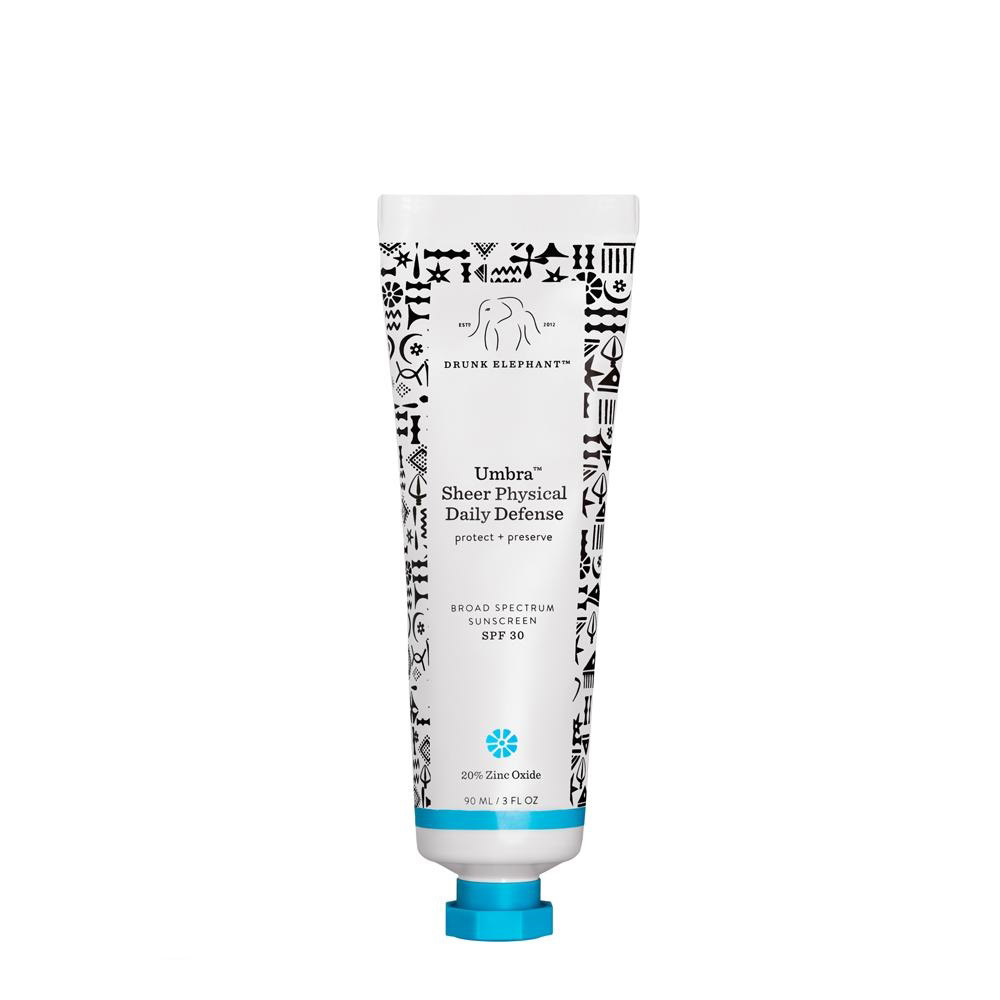
Umbra Sheer Physical Daily Defense SPF 30, $34 at Drunk Elephant
Drunk Elephant is known for its clean, effective beauty products. This physical sunscreen is a favorite thanks to its sheer formula with broad spectrum SPF 30 protection. It's formulated without any chemical sunscreens, fragrance, essential oils or silicone. Instead, the nonsensitizing, nonirritating product contains naturally derived zinc oxide and a host of antioxidants. The moisturizing formula is suitable for all skin types, including sensitive. FYI: There's also a tinted version.
-
Farmacy
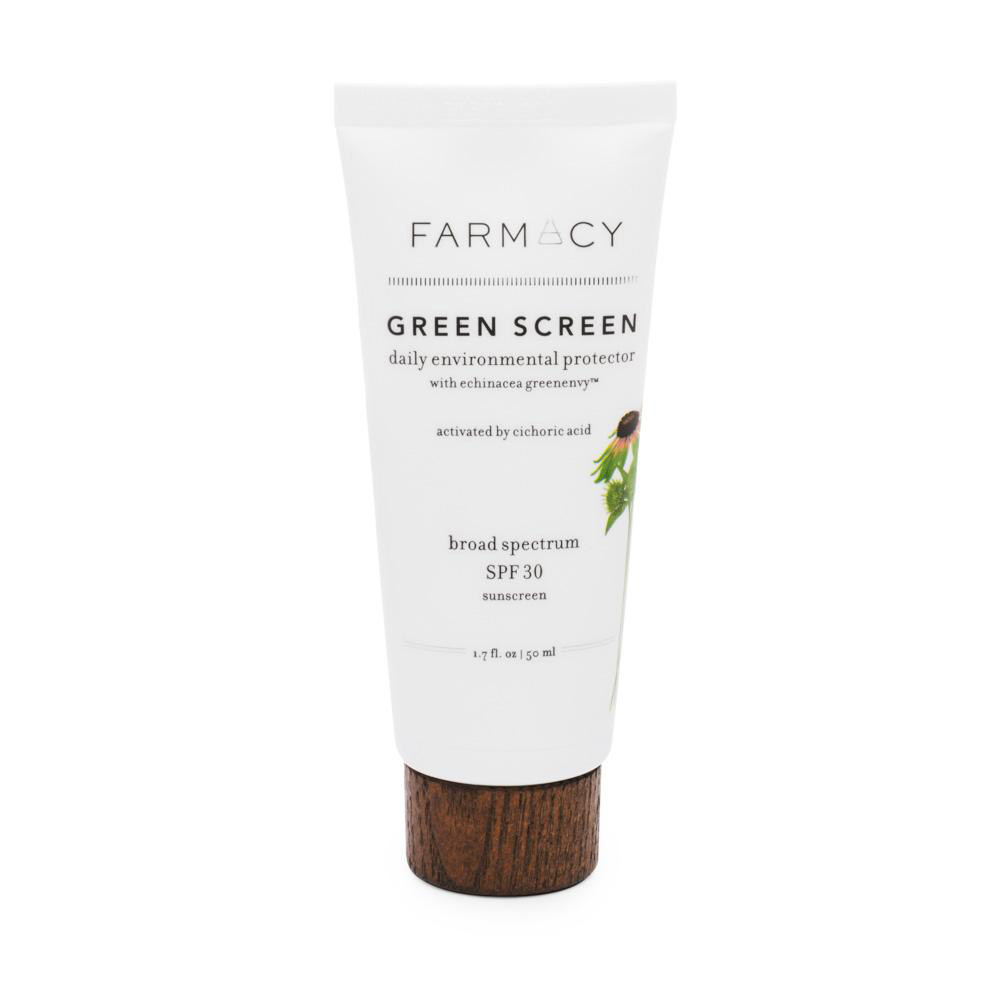
Green Screen Daily Environmental Protector Broad Spectrum SPF 30, $36 at Farmacy
Go green with the Green Screen sunscreen. The mineral sunscreen offers broad spectrum SPF 30 protection courtesy of titanium dioxide and zinc oxide. Those who aren't convinced about mineral sunscreens will like this one. It's nongreasy and won't leave a ghoulish white cast on skin, no matter your skin tone. Selfie lovers will be pleased to hear it's also photo flash-friendly.
-
Eir
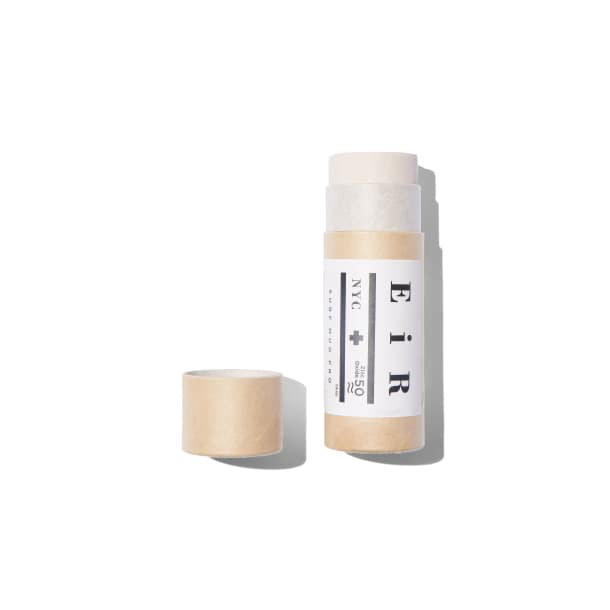
Surf Mud Pro Stick, $30 at Follain
This easy-to-apply stick has just five ingredients: zinc oxide, beeswax, coconut oil, cocoa butter and cacao. It has a subtle tint that counteracts any whitish haze plus the formula moisturizes while providing SPF 50 protection. It also has a delectable chocolate scent that's nothing like the artificial tropical smell we often associate with sunscreens.
-
Neutrogena
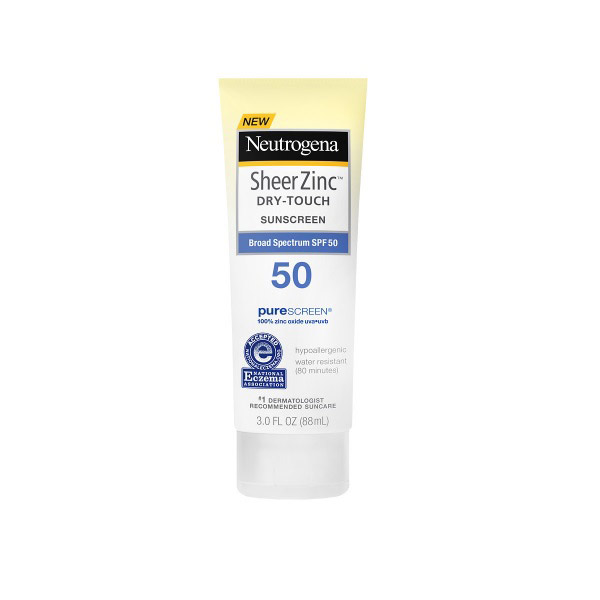
Dry-Touch Sheer Zinc SPF 50 Lotion, $12.99 at Walgreens
There are some great zinc oxide sunscreens available at the drugstore. Take this broad spectrum SPF 50 formula made with naturally sourced 100 percent zinc oxide. It's free of fragrance, dyes, parabens, phthalates and irritating chemicals so it's suitable for sensitive skin. It even boasts the National Eczema Association Seal of Acceptance. People who don't like sunscreen will genuinely like the dry-touch formula. It's lightweight, not greasy, dermatologist tested and sweat- and water-resistant for up to 80 minutes.
-
Promise Organic
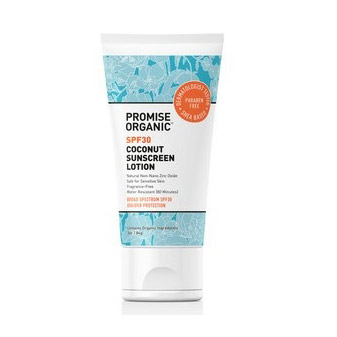
SPF 30 Coconut Sunscreen Lotion, $12.99 at CVS
Don't assume that the coconut in this sunscreen means it has an artificial coconut fragrance. The natural, full spectrum UVA and UVB sunscreen is made with zinc oxide and a blend of nourishing oils, including coconut, castor and jojoba for a creamy formula that nourishes as it protects. The nontoxic product is also pH-balanced, dermatologist tested and safe for sensitive skin.
-
Mad Hippie
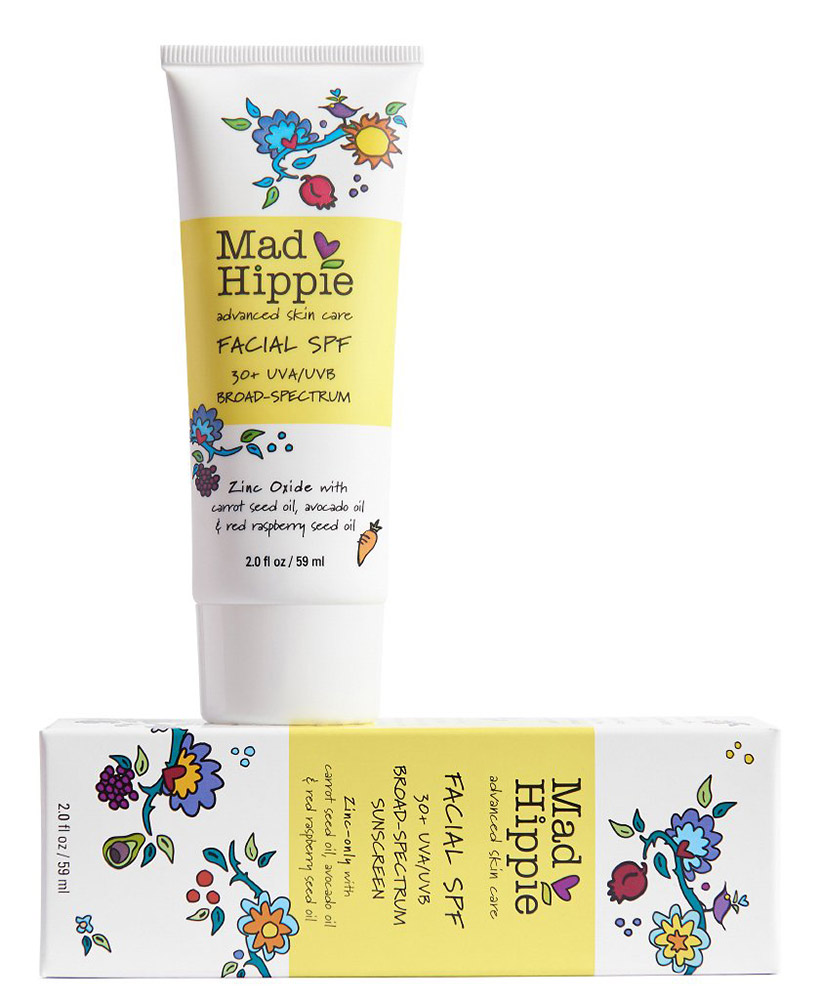
Facial SPF, $24.99 at Mad Hippie
Searching for a natural sunscreen specifically meant for your delicate face? Enter Mad Hippie. This chemical-free sunscreen is made without parabens, nanoparticles, PABA, petroleum, avobenzone, oxybenzone or UV chemical absorbers. What it uses instead is zinc oxide. It's combined with naturally photoprotective oils, ferulic acid, vitamin C and vitamin E for broad-range antioxidant protection from photoaging. The packaging is also adorable.
-
Suntegrity

Mineral Sunscreen Unscented SPF 30, $24 at Follain
Suntegrity was developed by a daughter who lost her mom to skin cancer and is focused on creating a holistic, mineral sun care line. This is a non-nano zinc oxide broad spectrum SPF 30 sunscreen that's designed for those who are sensitive to scent. It's even safe for babies and kids. The formula is vegan, cruelty-free and not greasy. Want more reasons to love it? It's rich in antioxidants, including green tea extract, aloe and pomegranate.
-
Goddess Garden Organics
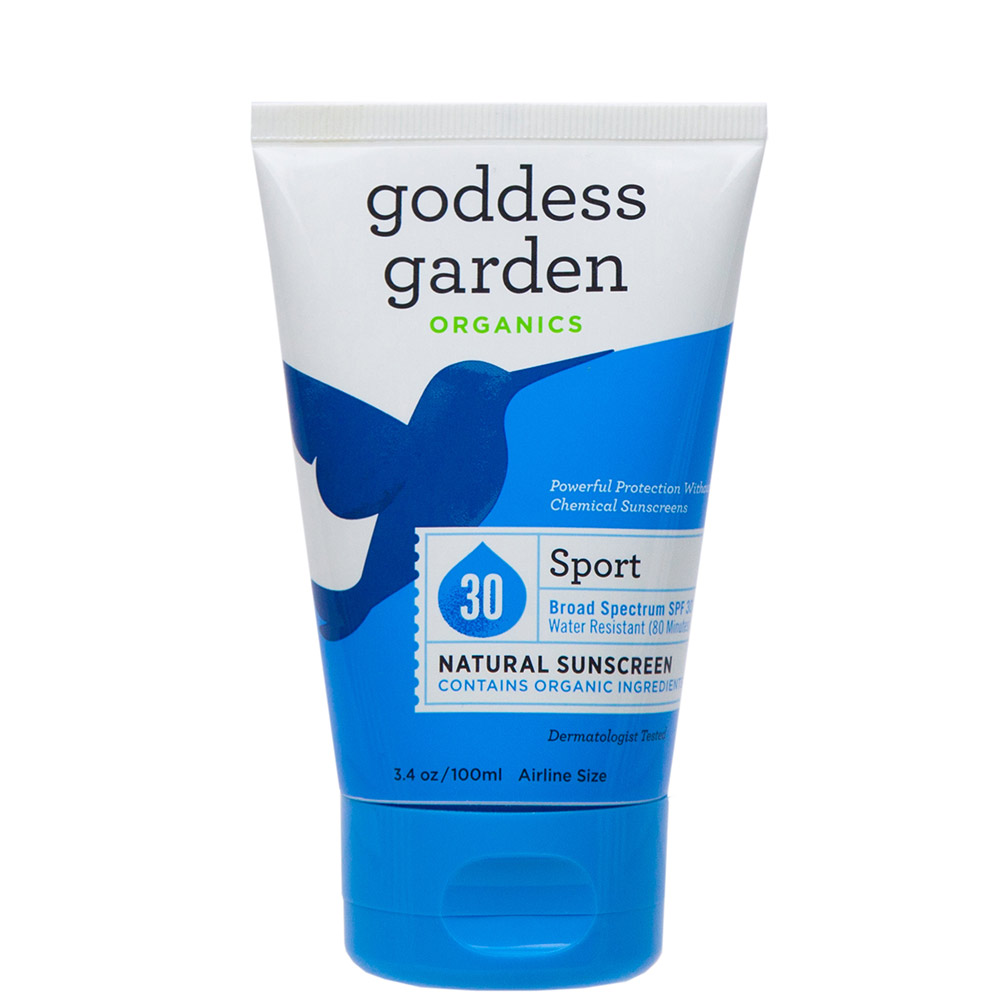
Sport Natural Sunscreen, $12.99 at Goddess Garden Organics
Those who are active need a sunscreen that can stand up through a little, OK, a lot of sweating. This broad spectrum SPF 30 natural sunscreen has been specifically designed for outdoor use. It's water-resistant for up to 80 minutes and uses zinc oxide and titanium oxide. It comes in a convenient airline size and is reef-safe and biodegradable.




